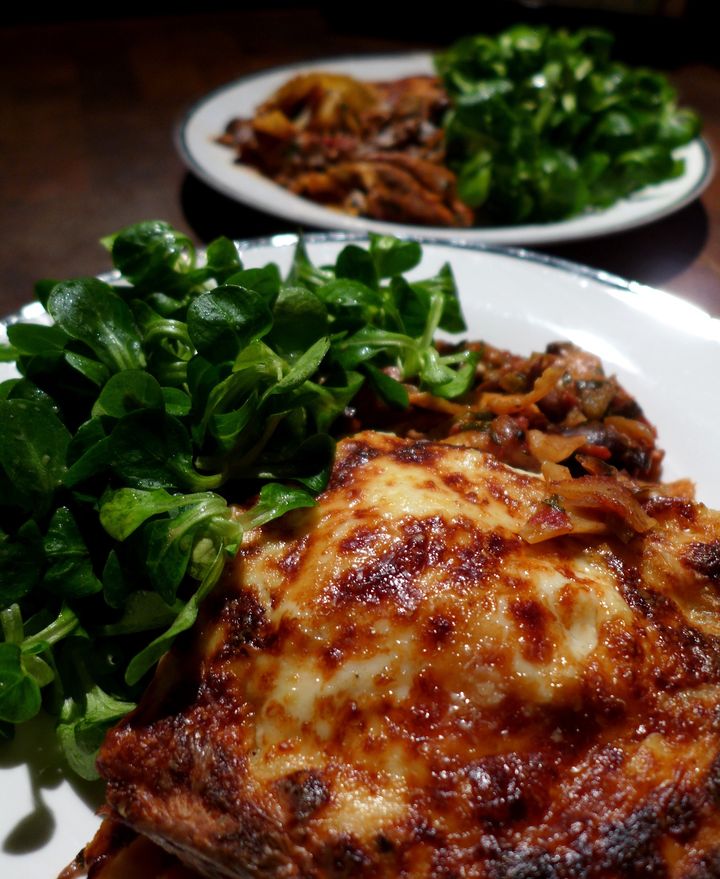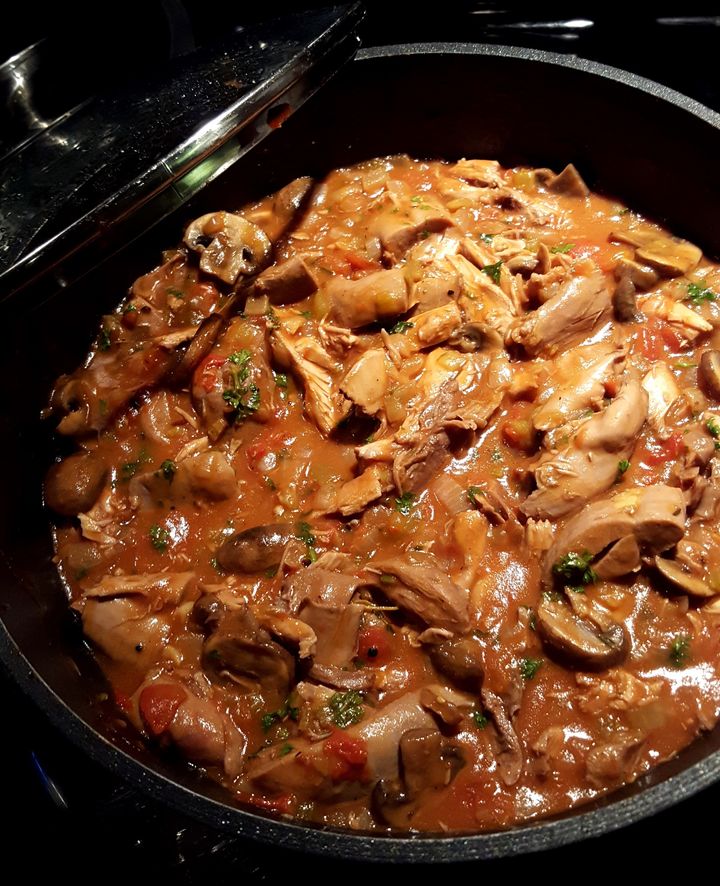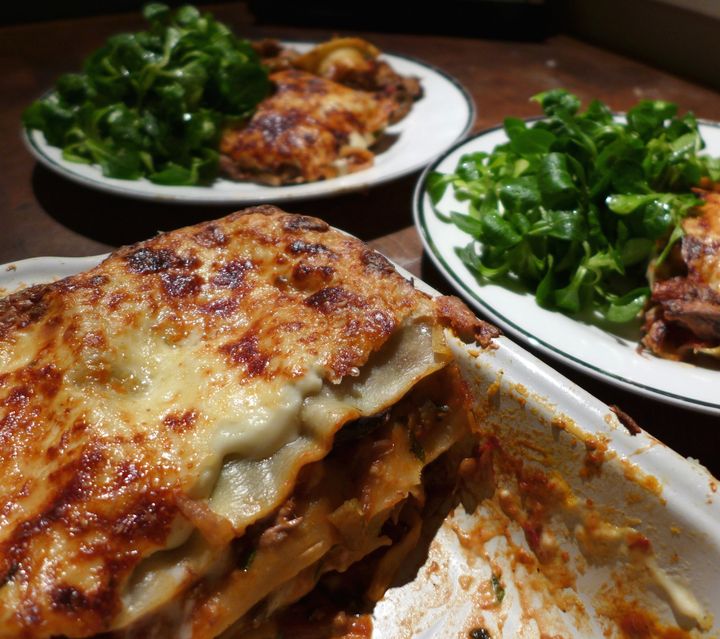I can’t pretend this is a quick meal to make, but I can promise it’s worth the effort. Guinea fowl is a delicious meat, with a full flavour like you imagine the very best chicken will have but which it so rarely does. It is robust enough to stand up to the red wine in the ragù recipe here.
Spatchcocking the bird will enable you to cook it more quickly ... snip the backbone out with kitchen scissors or a sharp knife, turn it over and press down hard on the breastbone to flatten it. Save the backbone for the stock.
Yes, you can use a stock cube if you’re in a hurry, but guinea fowl makes such a good stock it’s a shame to waste the carcass. You can spread the cooking over two days if that’s easier, in fact the ragù is even better the next day.
I think the lasagne is best made with fresh pasta. If you don’t want to make your own, buy it (again, available from good supermarkets) or use dried lasagne sheets and make the béchamel a little more liquid. If you prefer, you can skip the lasagne altogether and serve the ragù as a sauce for a pasta such as rigatoni or pappardelle.
Guinea Fowl Lasagne (serves 4 generously)

Ingredients:
1 guinea fowl, about 1kg, spatchcocked
Salt, pepper, olive oil
300g fresh lasagne sheets
30g Parmesan cheese, finely grated
For the stock:
The guinea fowl carcass
1 onion, chopped
2 sticks of celery, chopped
1 carrot, peeled and chopped
2 bay leaves
The stalks from a small bunch of parsley
Water
For the ragù:
The meat from the cooked bird
1 or 2 tbs oil
1 large onion, peeled and chopped
2 sticks of celery, trimmed and chopped
1 fat clove of garlic, peeled and finely chopped
1 knob of butter
150g mushrooms, sliced
20g plain flour
1 large glass of red wine
400g tin of chopped Italian tomatoes
200ml guinea fowl stock (or chicken stock)
A few sprigs of thyme, leaves picked
2 bay leaves
Salt and freshly ground black pepper
The leaves from a small bunch of parsley, chopped
For the béchamel:
1 pint/568ml whole milk
1 small onion, peeled but left whole
1 bay leaf
40g butter
30g plain flour
Salt, pepper and a grating of nutmeg
Method:
Pre-heat the oven to 200C/400F/Gas Mark 6. Season the spatchcocked bird with salt and pepper, drizzle with a little olive oil and roast for 40 minutes. Remove from the oven and allow to cool.
Remove the meat from the bones and cut into large bite-sized chunks. Set aside. Put the carcass into a large pot with the backbone you snipped out earlier, the onion, celery, carrot and herbs and cover with cold water.
Bring to a boil, reduce to a simmer and cook for 40-60 minutes. Season with salt and pepper to taste and once it's cool enough to handle, strain it into a clean bowl and discard the debris.
Heat the oil in a clean pan and gently cook the onions, celery and garlic for the ragù until soft and golden. Add a knob of butter then throw in the mushrooms and continue to cook for five minutes. Scatter over the flour, stir it in and cook it off for a couple of minutes.
Pour in the red wine, stir, and let it bubble up. Add the tomatoes and 200ml of stock and stir again. Add the guinea fowl, thyme and bay leaves and season with a little salt and pepper. Simmer gently for about 30 minutes, stirring occasionally, until the sauce is thick and rich. Check the seasoning, fish out the bay leaves and stir in the parsley. Set aside while you make the béchamel.

Warm the milk with the bay leaf and onion and set aside to infuse, then strain. In another saucepan melt the butter and stir in the flour. Cook it off for a minute or two, then slowly start adding the milk, stirring continuously, until you have a thick, smooth, glossy sauce and any floury taste has cooked off. Season to taste with salt, pepper and a little nutmeg and stir in a handful of the Parmesan.
Now, at long last, you can assemble the lasagne. Using an oven-proof dish, spread a thin layer of the ragù in the base. Drizzle over some of the béchamel, then cover with sheets of pasta. Continue building the layers, ending with pasta and a thick topping of béchamel. Scatter over the remaining Parmesan and bake in the oven for about 30-40 minutes, until the top is golden and bubbling.
